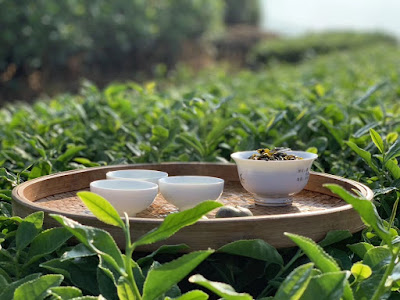THE CHEMISTRY OF TEA
What is tea?
Tea
(Camellia sinensis) is one of the oldest and most consumed beverage in the
whole world. Tea is grown in about 30 countries but is consumed worldwide.
Traditionally, tea has been known to have potentially beneficial effects were
not documented by laboratory studies until 1970. However, current studies have
revealed the chemical composition and biological effects of tea at a molecular
level.
According
to the different ways of processing, tea is usually divided into four basic
types; green tea, black tea, oolong tea and white tea. Shoots, young leaves,
mature leaves and stems of tea plant are usually used as materials for
processing various tea products.
Main composition of tea
There are approximately 600 traces of aroma compounds in tea leaves, some of which are lost and some that are released during the manufacturing process. Once plucked, tea leaves begin to wither, their cell walls begin to break down and chemical compounds begin to form new chemical compounds, not all of which are water soluble.
The
main constituents of tea leaves belong to the polyphenol group accounting for
25 to 35% on a dry weight basis (Balentine, 1997; Hara et al., 1995d). The
polyphenols in tea mainly include the following six groups of compounds:
flavanols, hydroxyl-4-flavanols, anthocyanins, flavones, flavonols and phenolic
acids.
Polyphenols
Important and
characteristic tea polyphenols are the flavanols of which catechins
(flavan-3-ols) are pre-dominant and the major ones are: (-)-epicatechin
(EC), (-)-epicatechin gallate
(ECG), (-)-epigallocatechin (EGC),
(-)-epigallocatechin gallate (EGCG), (+)-catechin (C), and (+)-gallocatechin
(GC) (Hara et al., 1995a; Liang et al., 2003). These compounds contribute to
the bitterness, astringency and sweet aftertaste of tea beverages (Hara et al.,
1995b).
Minerals
Mineral constitutes about 4 to 9% of the inorganic matter of tea (fluorine, potassium, aluminum, iodine, selenium, nickel, and manganese.
Aroma compounds
Aroma or volatile organic compounds (VOCs) are important factors of tea
quality, especially for the sensory traits of each tea type. To obtain the
VOCs, usually, there are several extraction methods, such as simultaneous
distillation extraction, solvent-assisted flavor evaporation, solid-phase
micro-extraction, and analysis of VOCs by means of headspace measurements.
Taste and color of tea
A cup of
infusion of made tea is completely different from the infusion of fresh tea
flushes in color, taste and aroma. These characteristics are developed during
the manufacturing process after the harvesting of tea flushes. Tea flush is
generally a reference to young shoots of tea that consists of terminal bud and
two adjacent leaves. In fresh tea flush there exists a wide variety of
non-volatile compounds; polyphenols, flavonols and flavonol glycosides,
flavones, phenolic acids and depsides, amino acids, chlorophyll and other
pigments, carbohydrates, organic acids, caffeine and other alkaloids, minerals,
vitamins and enzymes. The total phenols in tea flush ranges from 20 to 35% . A series of changes occur in the process of manufacturing tea (made
tea). The three basic types of manufacturing tea are green, semi-fermented and
black tea. They differ mainly in the degree of fermentation. Green tea
undergoes little or no fermentation, and black tea is produced as a result of
full fermentation. Semi-fermented (oolong tea) is a product of partial
fermented tea. The difference in color, taste and aroma of various teas are
caused by the manufacturing.






Comments
Post a Comment